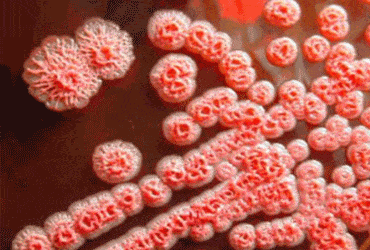The United States Pharmacopeia (USP) has proposed a new chapter to address one of the most prevalent microbiological threats in the pharmaceutical and healthcare industries. USP proposed Chapter <60> “Microbiological Examination of Nonsterile Products—Tests for Burkholderia cepacia Complex,” provides, for the first-time, compendial methods for detecting these troublesome microorganisms.
B. cepacia Complex (BCC) is a group of approximately 15 gram-negative bacteria species known to cause a dangerous type of pneumonia in humans, making it especially threatening for immunocompromised individuals, particularly those with Cystic Fibrosis.
This complex of closely-related microorganisms has caused multiple product recalls over the past several years including nasal spray and sublingual probes in 2004, mouthwash in 2005, prefilled saline flush syringes in 2016, oral liquid docusate products in 2016-17, and No-Rinse Cleansing Foam in 2018. B. cepacia has also been known to cause Healthcare-Associated Infections (HAI) as it is a frequent colonizer in items such as irrigation solutions and intravenous fluids and can form biofilms in facility water systems. Two of the strains of the Complex most commonly found in products and healthcare environments are Burkholderia cenocepacia and Burkholderia multivorans.
Detection of BCC has proven challenging due to the unique characteristics of the various strains and the inability to select for these characteristics. Strain identification is difficult as well, as traditional methods have proven ineffective at distinguishing between the multiple strains of BCC.

By creating Chapter 60, USP is attempting to provide manufacturers and support labs with guidance on methodology for isolating and detecting these opportunistic microorganisms. Regulatory groups such as the CDC and FDA have long had BCC on their radar due to the highly contagious and virulent nature of these organisms.
BCC can survive or multiply in a variety of non-sterile and water-based products due to its resistance to many preservatives and antimicrobial agents. The microorganisms’ presence within a facility water system can contaminate products and processes associated with the system.
The proposed chapter reads, “The tests described in this chapter will allow determination of the absence of Burkholderia cepacia complex (BCC), which can be detected under the conditions described. The tests are designed to determine whether a substance or preparation complies with an established specification for microbiological quality and to evaluate whether products—especially those for inhalation use or aqueous preparations for oral, oromucosal, cutaneous, or nasal use for high-risk patient populations—contain members of the BCC.”
The chapter provides Growth Promotion and Suitability Testing guidelines and standards for the Growth-Promoting, Inhibitory, and Indicative Properties of the Media. Also included in the Chapter are instructions for preparing Burkholderia cepacia Selective Agar.
The proposed chapter appeared in the September 7, 2018 issue of USP’s Pharmacopoeial Forum (PF 44(5)). USP has not yet announced the official implementation date.




